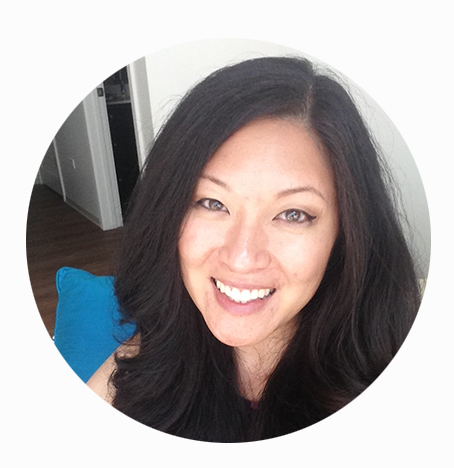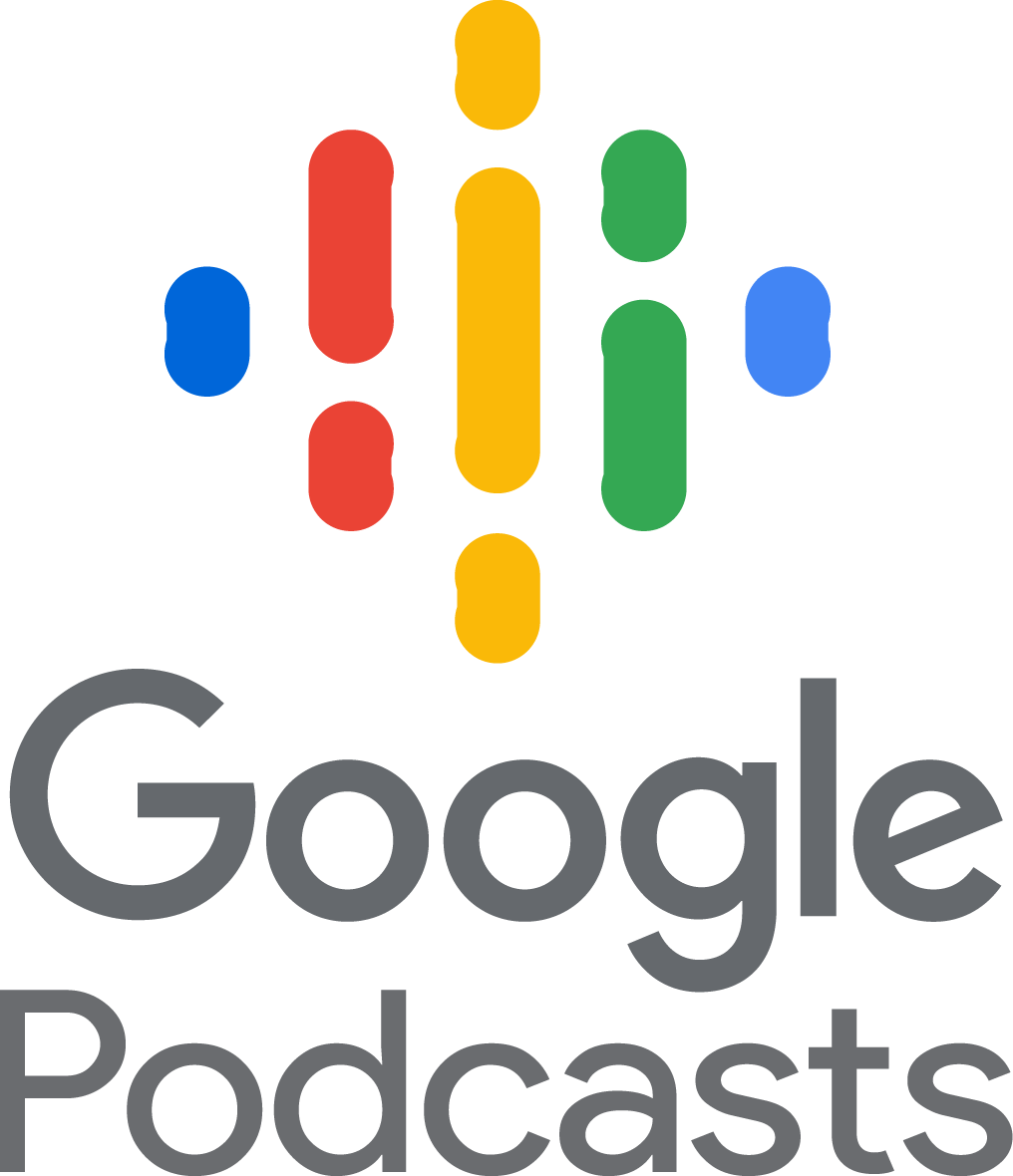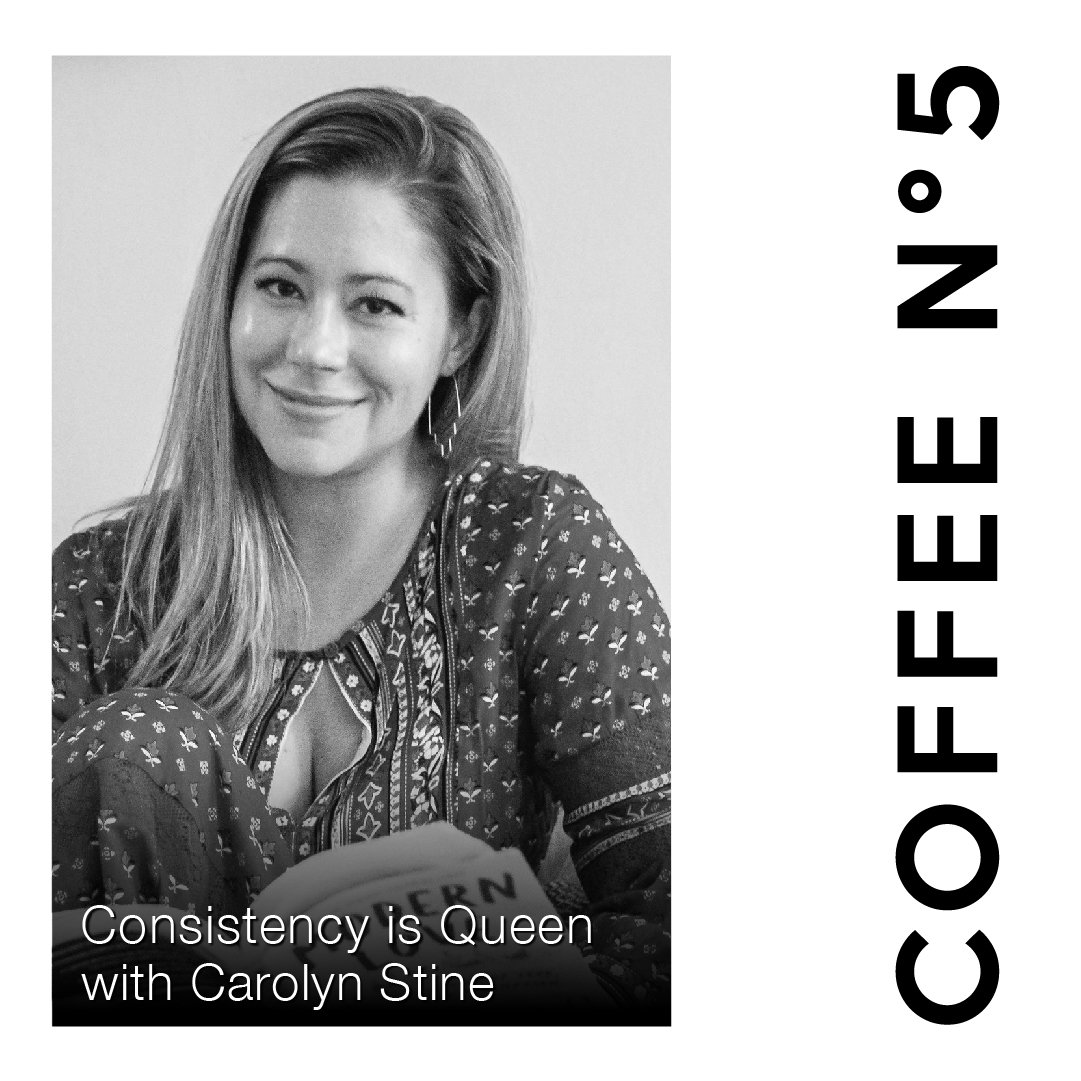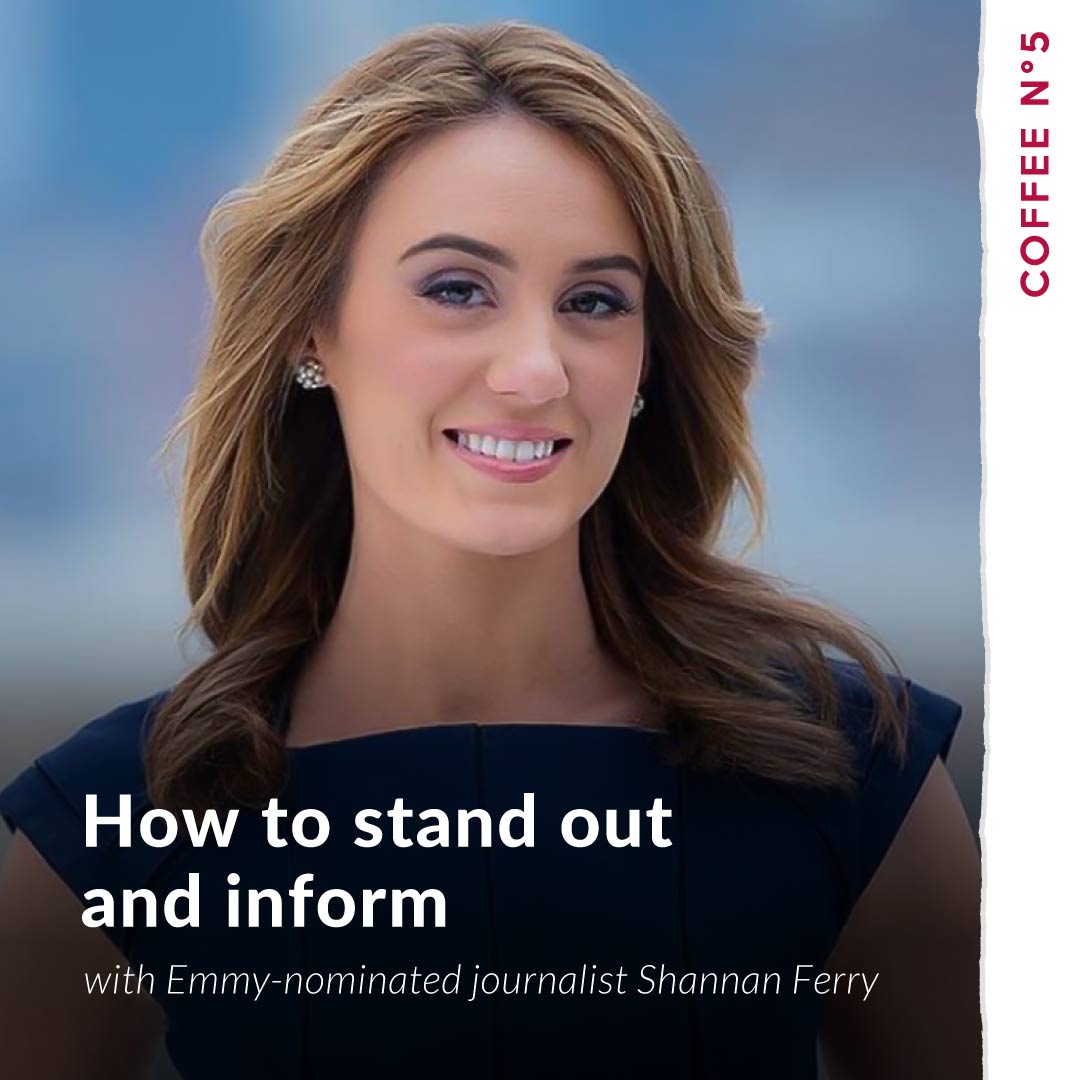Lara Schmoisman 0:05
This is Coffee Number Five. I’m your host Lara Schmoisman. Hi, everyone. Welcome back to Coffee Number Five. Today, I woke up thinking about experience. I, there’s so many things that I know. And I don’t know how I know it. I don’t know if this happened to you, but it happens to me all the time. And like even I have my team telling me, how do you know that that will happen? And it’s not that I have the crystal ball, which I wish I would have. But it’s just experience that I can predict that something will happen without, because all the things I need in my life. And it’s like, you know, that cause and effect. So there are so many things that are like that, but some others are not like that. And there’s something new out there that. It’s fascinating. It’s absolutely fascinating. That is predictive intelligence. And recently, I had the honor and it was a joy to meet Andi, Andi Govindia. I think I butchered that. But I apologize, so welcome!
Andi Govindia 1:16
Thank you, Lara. It’s such a pleasure to be here. And you pronounced that perfectly.
Lara Schmoisman 1:19
I did. Wow. Yay, me. So welcome to Coffee Number Five. You are the co founder and CEO of Riviter. Did I say it right? That one? I did two in a row today. Anyway, tell us a little more about your company and how you started. And I want to hear everything about predictive intelligence, because I know you showed me the platform, which is absolutely mind blowing, and, and even help so much businesses about understanding what’s going to be successful.
Andi Govindia 1:58
Yes, I love the story that you started with, right? Because I think that’s most most people who have done well in marketing or done well in branding, do have a really good intuition there, you were able to have that predictive intelligence. But when you think about doing that reliably thinking about that at scale, that’s where having a company like Riviter helping you can really make a difference. So that’s exactly what we do. We give predictive intelligence to brands using the visuals that consumers share on social media. And what that means is that we can see products in photos, and we can understand what is trending up and down everything from what she’s wearing to what she’s consuming to,
Lara Schmoisman 2:35
You need to give me an example. Over my IQ I thing, because this is, this is mind blowing. And when you show it to me, it was even more because experience is amazing. And I really valuable, is valuable. And I believe in what you just said that experience. And that gut feeling because you’ve been doing it for so long, it can help you be successful. But if you have your experience on top on top of that, tools that you can use, it’s you’re unstoppable. So give us an example how a brand will use this?
Andi Govindia 3:12
Yes, I think the best way to do that is through a story, right? So actually, one of our very first customers was a global hair color company. And they were working across Asia. And they said, you know, we’re in one part of Asia, we want to understand what’s trending in Japan. And we want to understand what’s trending in Korea. And we can’t just rely on our experience and our own intuition to tell us what’s going to do well in hair color in those two countries. And until they met us, they had been, you know, scanning Google looking at Google Images, copying and pasting images into a lookbook. And really just kind of counting what they could see to predict what hair colors were going to go up and down. So they turned to us and said, Can you actually give us a way to do this a little bit more reliably? A little bit more methodically? And that’s exactly what we did. We looked at social media posts from women and men in Korea and Japan, and counted and used our system uor computer vision AI to see what colors hair colors, were trending over time and then project what colors were going to go up in the future for this company.
Lara Schmoisman 4:17
How far you could predict this based on seeing how many people are starting to trend in that color? is based on trends?
Andi Govindia 4:23
Yeah, so we take a little bit of a different approach from kind of traditional social listening. So social listening tools are the ones that you know, kind of watch hashtags and see what people are talking about. And they just watch the content. We are a little bit different in that we actually look at people and so we’re forming kind of groups of people to watch over time. And what’s helpful about that is we can actually identify who the tastemakers are in any given group. So if we want to understand the way trends are moving in beauty in Japan, we’ve got to follow the tastemakers and beauty in Japan. And through that group, they give us a reliable indication of okay, they’ve predicted this many trends over over the course of history. We trust them to predict trends moving forward. And we do that at scale, which makes it really reliable.
Lara Schmoisman 5:08
How long it takes you to do this predictive?
Andi Govindia 5:12
Yeah, it’s, it’s completely automated. So we have worked on the company for eight years, we built an AI engine that can automatically detect that for us. And so really, it’s just a matter of asking the machine the question, and then seeing the data and reporting on it.
Lara Schmoisman 5:27
That’s amazing. And I’m thinking because I love trending. And I that’s something we do research all the time and see from keywords, to hashtags from an emerging trending and visual trending, something’s super new, which is great. But how far in advance? Can you predict the trend?
Andi Govindia 5:47
Yeah, that so the word visual actually helps us is that it gives us a lot more data to rely on. So in fact, we can see indications of tastes and change before people have language to describe it. And so what we’ll often find is that we’re actually about 24 months ahead of major trend changes. So things like color changes, things like ingredient changes ahead of Google web search, and certainly ahead of sales and kind of lagging indicators that we that people usually use to form their product assortment. So we get quite a quite a bit of lead time in seeing these things.
Lara Schmoisman 6:24
And you just mentioned ingredients. That’s very interesting, because how do you from the images, you can talk about ingredients?
Andi Govindia 6:32
Yeah, there are a couple of things. So one is that our system is able to recognize when things are in packages, right. So we can not only see that someone’s talking about when they’re having a conversation about vegan, that they’re holding up a bottle of shampoo versus holding a plate. And those are very different conversation. So it’d be hard to tell that without the picture. But then we can also actually read the labels on the images. And that also gives us an early indication of things that have been brought to market with these ingredients in them.
Lara Schmoisman 7:02
I’m still processing here, but let’s take it one step further. Let’s say I’m a new brand that comes to you. I’ll say, Hey, I have this very unique ingredient that I’m trying to feature. How can you help me?
Andi Govindia 7:18
Yeah, there, there are a couple of things. I think, ideally, you know, if you are a new brand, and you’re focusing on a novel ingredient, maybe there isn’t a whole lot of conversation about that ingredient for the way that you’re using it right. And so you can’t rely on these other things like social listening and Google Search to tell you how that’s going to go. But you can see where is the conversation right now? And who’s talking about it? And if I look at those people, maybe they’ve only talked about it once or twice. But let me look at those people and look at their whole lives. And where does this fit in? What other topics? Are they talking about? What are their concerns and care about? And is there a place for my ingredient to serve those care abouts and concerns if I really believe in this ingredient? So that’s kind of one one side of it. And then the other side, of course is Is there conversation about it? Is it something that has been been talked about that maybe not in the way that I’m thinking about using it?
Lara Schmoisman 8:09
That’s really smart. This is something I always talk to my clients about how we talk about the brand, because it’s not sometimes how we talk about the brand, because we’re the experts in the brand. It’s about how people that the consumers are going to be talking about the brand.
Andi Govindia 8:28
Yes, 100%. And I think, you know, not just consumers as a whole, but different segments of consumers think about things in different ways. One of my favorite examples that we just looked at was how different generations talk about ceramides, as a skin ingredient. And actually a lot of the marketing to date has been very scientific, very kind of research based. What it turns out that that really resonates with millennials, but maybe it doesn’t resonate as much with Gen Gen Z. It sounds kind of how do we talk about this ingredient in a way that can either bridge the gap? Or how do we focus on the audience that that does get it
Lara Schmoisman 9:03
Also how you initiate the conversation knowing that in this case, there are more millennials talking about ceramides you’re going to be using different way different boys maybe that helps you a lot for the brand voice.
Andi Govindia 9:16
I think you’re absolutely right the benefits the things that are important to that group are different and and meeting them where they are and thinking about their care about makes a big difference for sure.
Lara Schmoisman 9:27
That goes by, people, what I always talk about that is creating that deck brand and about really important to determine who’s the voice and that your target audience, that archetype. And that archetype you cannot have it without having your research. Of course, you gotta have a gut feeling of who is going to be good fit for your brand, but still, there’s nothing like data that can confirm that.
Andi Govindia 9:54
Yes, I love surprising our customers right with who their people are because they often have it good instinct on their core and the people that brought them to market. But they may not realize there’s a whole other audience for them, who maybe even already loves them, or is already talking about their brand or their there’s hero ingredient that they could be having a conversation with.
Lara Schmoisman 10:14
I love that you said that, because there are so many people that actually super niche, thinking that the audience is so minimal, that it’s just a certain group of people. And they don’t realize that other people can benefit from the product, too. It goes both ways, or some brands is going in such a big because they think is great for the whole market. And they’re missing out on really creating that conversation for a very targeted audience.
Andi Govindia 10:40
Yes, 100%. You know, we like to say that good brands create products for communities, right. And that’s that that’s really, the center of it is rather than just kind of creating products in isolation or listening to it to community and creating the product is it’s kind of building it around who are these people who are going to love you and your product.
Lara Schmoisman 11:00
So you work with a lot of I assume beauty brands, food brands,
Andi Govindia 11:06
Yes, if you can consume it, if you can wear it, if you can write in and around it. Those are the types of brands that we work with.
Lara Schmoisman 11:13
Add these see, because we were there a lot of entrepreneurs who listen to your podcast, a lot of business owners, and something that I see as a con, that constant is what I just mentioned, trying to, and let’s be realistic, that many times in emerging brands, they don’t have that huge budget to put advertising or to just spread the world as much as they want to be in the whole world. They cannot do that. So that’s where being really intentional makes a difference. Do you see this happening too?
Andi Govindia 11:46
100% I think, you know, a lot of times brand owners and entrepreneurs have this conflict of I want to do market research. And I want to do surveys, and I want to do focus groups, but I don’t have the money, or probably the time to do all the things. But how do I get close to my consumer otherwise? And so I think if we can bridge that gap, make this a really light touch to have an eye on the consumer without having to make those sacrifices and trade offs, then that’s that’s exactly how brand owners can make smart decisions without having to break the bank,
Lara Schmoisman 12:21
What wouldl be working with you guys will be just having a kickoff meeting, how does it work, or you just give them access to the platform, and people are on their own doing direct research?
Andi Govindia 12:32
Yeah. So right now we do still really like to onboard our customers individually. I think that it’s such a new area thinking about where do social insights fit in the rest of my strategy or market research plan is helpful. And I love just talking to people up. So it’s kind of self interested, too. But we do have ways that are doing their own research. Yeah, exactly. Exactly. 100%. We love just hearing what people what questions people have and what people are curious about. And so I think that’s it just come with a question of here’s who I think I want to look at, here’s the behavior, the interest, I think they have, and here’s how I fit into their life or the hypothesis that I have. And then we do the rest. And it can be as quick as you know, here’s this quick report on what’s going on with this ingredient in that space. Or it can be a little bit more of an in depth study on that group and on that category.
Lara Schmoisman 13:26
So this can be one time thing, or is something that needs to be recurrent?
Andi Govindia 13:31
That’s a great question. It can be both right. So and the most important thing I think is that people find a comfortable routine into building insight into their decision making. And so if it’s just pre launch, and I just want to validate this before I make these big investment decisions, happy to do at one time. But we also have a database where our customers can go in search trends, see small news articles on what’s trending in their space and just stay informed long term.
Lara Schmoisman 13:58
Now, the problem is that for an entrepreneur or a small business owner, it takes a lot of time, it’s very time consuming that if you have to read and I talk to people all the time that they tried to do it the do it yourself route. So they spend so much time building an email to go out than or looking for platforms or doing research and then they don’t end up doing their job.
Andi Govindia 14:22
Yes, yeah, it’s it’s a big trade off for sure. I think, you know, the a lot of the tools and traditional methods out there are very time consuming. If you think about, oh, gosh, do I have to read every single newsletter and every single trend alert that comes out and every single magazine like that, that would be a full time in and of itself a full time job and it is very there are people who do that for a living. And so I think having a partner to say I just have this quick question and I’m gonna go into my work. Can you provide me a quick answer
Lara Schmoisman 14:52
I love that. That’s what I tried to do for my clients like Hey, I was thinking about this. What do you think? Okay, let me see if we can make had happen are now the pros and cons, but they don’t have to go on integrate themselves. They don’t have to go and do it themselves. And many people do this as a side gig. And because they are not there yet to be able to leave their nine to five
Andi Govindia 15:17
Yes. Yeah, I think, you know, there’s been a lot of conversation about AI, right? What does that mean? And how does that change the way we work? And does it? Does it threaten my job? Does it help me? And this is one of the areas where I think it really does help is we’ve already seen how powerful it is with something like chat GPT, where it used to be where I had a question, maybe I’d spend 5-10 minutes googling for the answer. Now, I have a question. Maybe I spend a minute, I get a full essay back on the answer. Right. And I think that’s what we’re seeing in AI. And that’s what we’re doing with with Riviter as well, as I have a quick question. And I only want to spend a minute asking it, but I want to really full and rich answer in a short amount of time that I can move forward with.
Lara Schmoisman 15:57
So when you get all the research and all the data, how do you see your customers been more successful using this data?
Andi Govindia 16:07
And it informs their decisions in big ways, right? So all the way from conducting a product and and deciding what should go in it, how it should be positioned at the beginning, to go into market with it, how should it be packaged? What should the experience of unboxing and experiencing this product be? And then going to market of which criteria do I need to be thinking about when I’m doing precision advertising? Or, or search or social marketing? How do I craft for this photoshoot to be as effective as possible, knowing that I only have a certain number of hours with the photographer, one model, one one look to put on this model. And just being very confident in those decisions and knowing which ones are really going to hit that audience and do well. And is is everything it makes a big difference and making that turn out well.
Lara Schmoisman 16:55
There is several companies who were very traditional and well known as a research company, how would you say that you compete? Or you differ from them?
Andi Govindia 17:07
Yeah, I think we’re trying to work with most of them. And we have worked with with big ones. I think a lot of them, one of the big questions that they get asked by their own customers that they have a harder time answering is how does Gen Z feel about X, Y or Z? Because they’re not answering surveys. They’re not shopping with credit cards in grocery stores. They’re not doing watching TV. They’re not doing all these things that used to be the basis of this traditional market research. But they are on social media. And not only are they sharing what they want, they expect brands to see that they expect brands to respect that and hear that and respond to it. And so a lot of them are saying can you fill this gap in our offering without also sacrificing that quantitative research rigor that we’ve built a name around?
Lara Schmoisman 17:52
No, absolutely. So obviously, you’re going to say that this is an amazing, really important investment for a new brand.
Andi Govindia 18:02
Yes, I mean, insights are they can feel like a luxury, I think and I know that as an entrepreneur myself, right. So when we’re researching, just as you said, I spend time talking to people, because that’s our form of research. We’re not we’re also not commissioning large studies or surveys. But just asking the right question at any time is a great habit to build. And so having a partner beside you, who you can trust to get you to think in that way and get you to ask those questions. That’s what matters most. And however, you know, how much time or money you throw at a tool or through a study, it doesn’t matter until you have that curiosity and have that approach going in.
Lara Schmoisman 18:40
That’s amazing. Well, Andi it’s such a pleasure to talk to you. Where people can find your work, they can learn more about your platform?
Andi Govindia 18:49
Yes. So they can go to our website Riviter.com R I V i t er it’s misspelled from the from the traditional word, and they can email me at Andy a n d i @riviter.com.
Lara Schmoisman 19:02
That’s perfect. Well, thank you so much for being here today and to give us all this insight and a look inside AI and how it works and how it can help emerging brands and not so emerging brands who make wise decisions.
Andi Govindia 19:15
Thank you so much, Lara. It’s been a pleasure.
Lara Schmoisman 19:16
And to you guys, thank you for being here. And I’ll see you next week with more Coffee Number Five. Find everything you need at Laraschmoisman.com Or in the Episode Notes right below. Don’t forget to subscribe. It was so good to have you here today. See you next time. Catch you on the flip side. Ciao ciao.








